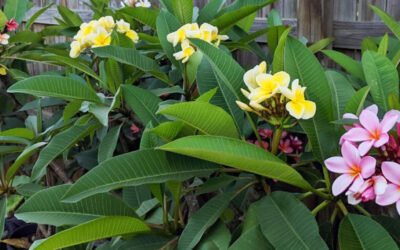
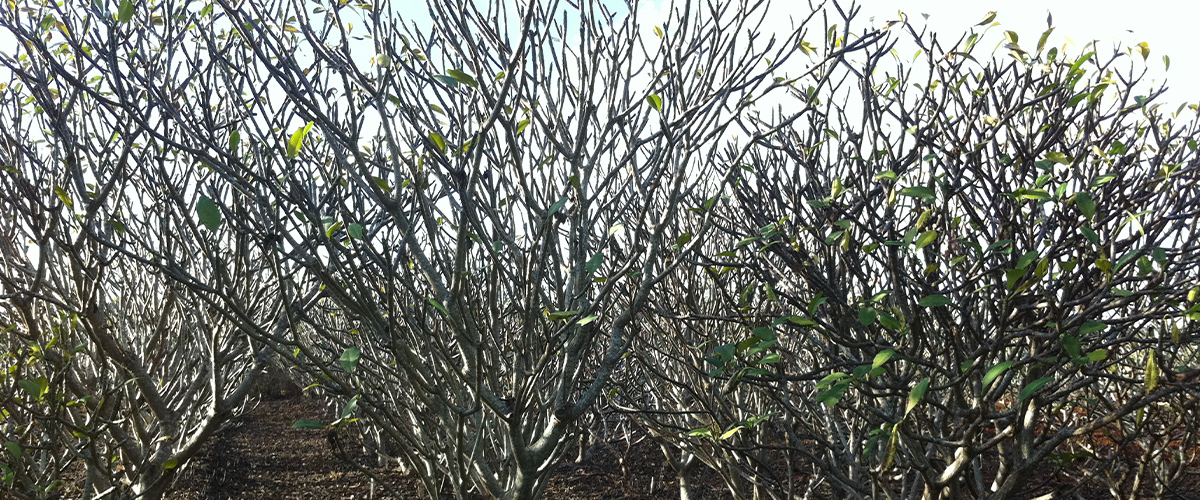
My frangipani has no leaves! Help!
My Frangipani is losing its leaves and flowers and is naked. Why?
First of all, it’s ok! Your frangipani losing its leaves is absolutely normal! And it’s probably autumn or winter time at your place. So no, your dearly loved tree is not dying, it’s just dormant and will regain its lustrous glossy leaves, and vibrant flowers come spring and summer. Because most frangipanis grown in Australia are deciduous, the leaves begin to drop when temperatures reach below 10 DegC and the sun starts to move North closer to the equator which shortens the day length as winter approaches.
In most sheltered or warmer parts of Australia dormancy just triggers a change in how you look after your frangipani. However, in areas that experience heavy frosts, this signals the time to start moving your potted frangipani to be over-wintered, that is, taken indoors, either in the garage, a sunroom, in the house or a glasshouse. They still do require sunlight during the day to remain healthy with the tips often remaining green and photosynthesizing during winter. Once dormant, you don’t want to overwater or fertilise, but infrequent watering to keep the potting mix from drying out to the point it becomes hydrophobic, and to keep surface feeding roots from totally drying out is recommended.
Thankfully, new leaves emerge during the following spring flowering period. However, there is an exception to the rule. P. obtusa and its hybrids can retain their foliage year-round.
For some people not used to deciduous plants that lose their leaves this may seem ugly, so what can you do?
Your frangipani may not look stunning during winter, but they use this time to clean up their stems and prepare for another big show in Spring and summer. Think of it as if they are going into hibernation and bare all to survive. The good news is that when spring rolls around again, your tree will be back to its full glory. However, if you think that the aesthetic appeal is of concern, we suggest planting shrubs at the base of your frangipani that have colourful foliage and where they intensify in colour during winter when the trees above are dormant.
Your frangipani losing its leaves isn’t a bad thing either. When the leaves drop, they provide lovely nutrients, carpeting the soil to the trees below. Also, the mulch layer helps to retain moisture in the warmer growing months. This mulch layer protects the new root tips near the soil surface and cycles nutrients into the root zone where they are drawn up into the tree during the growing season.
Watch this video at around the 25 second mark. They share a great tip about frangipanis.
When is the best time to take frangipani cuttings?
When taking a cutting or attempting propagation of your frangipani, we recommend doing so just prior to spring or at any time during summer. The good thing about spring is that sap movement is considerably less and you don’t need to remove any leaves. That way, when your cutting takes root during the warmer months, you can transplant your rooted cutting into the garden and enjoy yet another frangipani tree. For how to strike a frangipani cutting, read our previous blog.
What Frangipani are the best for cooler climates?
- The hardiest frangipani is the Plumeria rubras, with bright flower colours including yellow, light orange, white, and the popular pinks and multicolours in both light and dark pink.
- Plumeria stenophylla and Plumeria obtusa plus Obtusa Hybrids, prefer warm and protected areas away from the wind and elements due to their delicate nature.
- Plumeria obtusa and Plumeria pudica pink perform at their best in a warm, protected position. This position will maintain their sex appeal.
- Plumeria pudica white, while it is a solid plant as far as ease of care and hardiness goes, be mindful that it has thin branches. So, compared to other frangipanis, it requires more water and fertiliser.
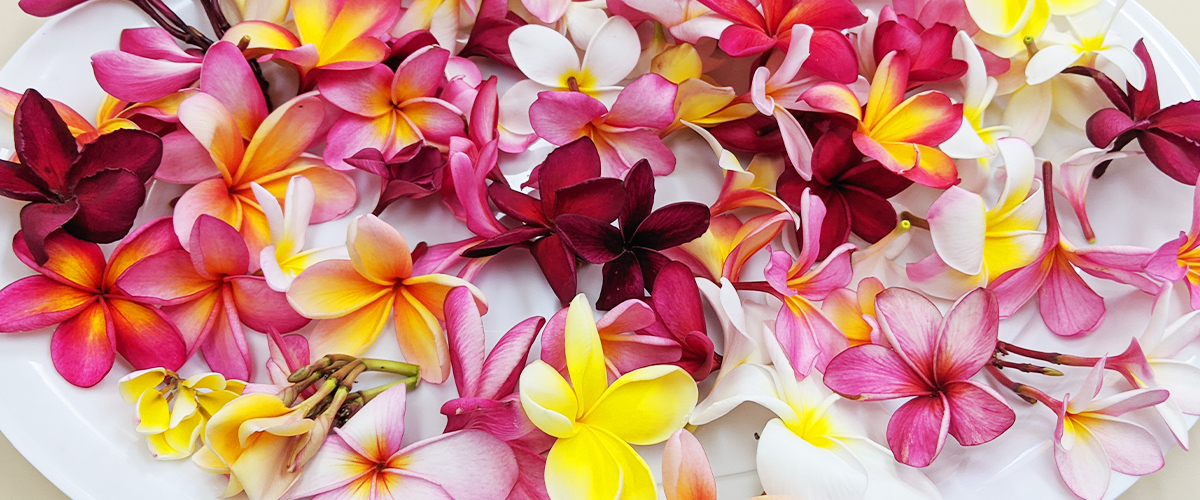
At Fancy Frangipanis, we find frangipani easy growing plants that gardeners all over the country can enjoy. And once you grow them, you will love them just as much as we do. So let us show you our collection.
Recent Posts
Frangipani flowers love summer. The Aussie Christmas Tree.
“Summer loving had me a blast. Summer loving happened so fast…Summer days drifting away, to, oh,...
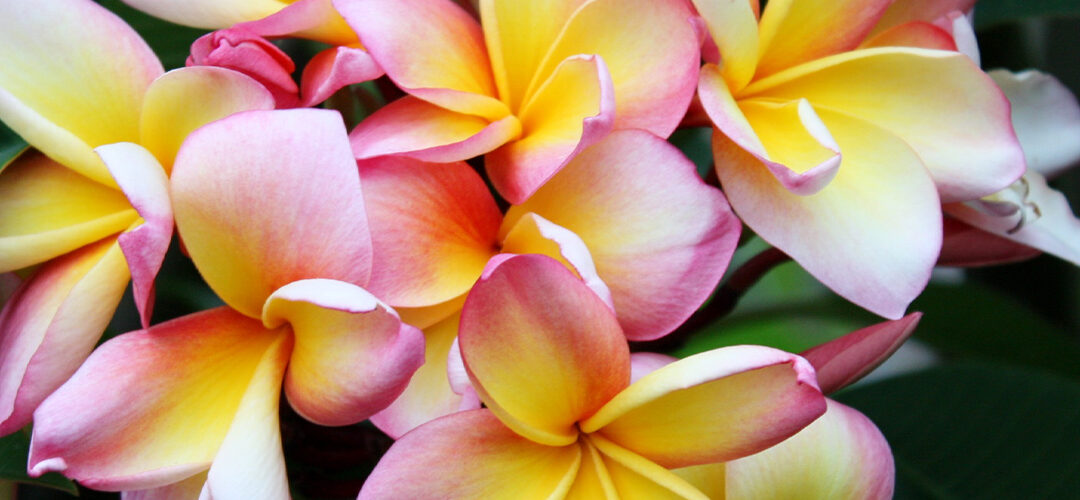
Frangipani flowers love summer. The Aussie Christmas Tree.
“Summer loving had me a blast. Summer loving happened so fast…Summer days drifting away, to, oh,...
Make a frangipani lei. Relive memories. Frangipani bridal bouquet.
Exotic frangipani blooms and displays transcend to a sweet place.The frangipani bloom is heralded...

Make a frangipani lei. Relive memories. Frangipani bridal bouquet.
Exotic frangipani blooms and displays transcend to a sweet place.The frangipani bloom is heralded...
Can I grow frangipani in a pot?
I rent. Can I still grow frangipani at home?Frangipani can be grown to a relatively decent size in...
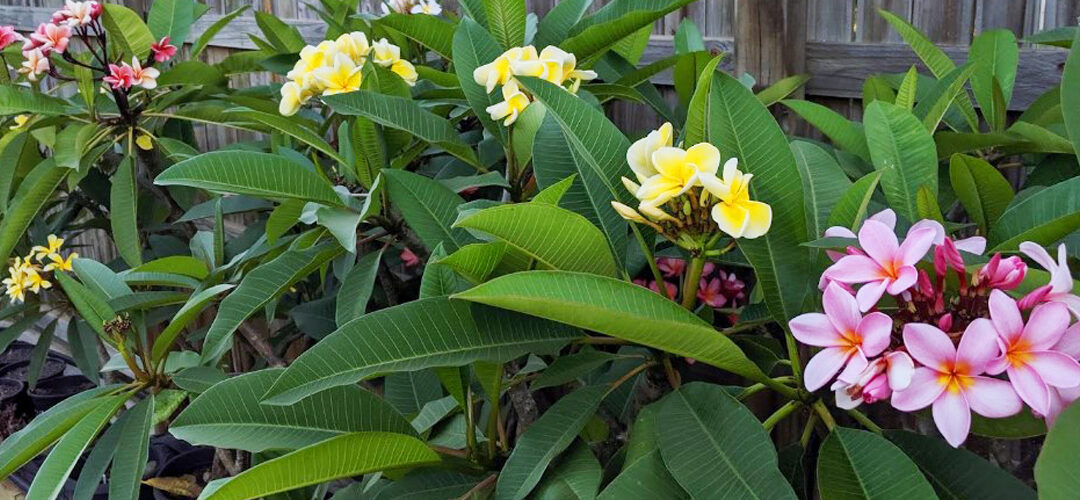
Can I grow frangipani in a pot?
I rent. Can I still grow frangipani at home?Frangipani can be grown to a relatively decent size in...




